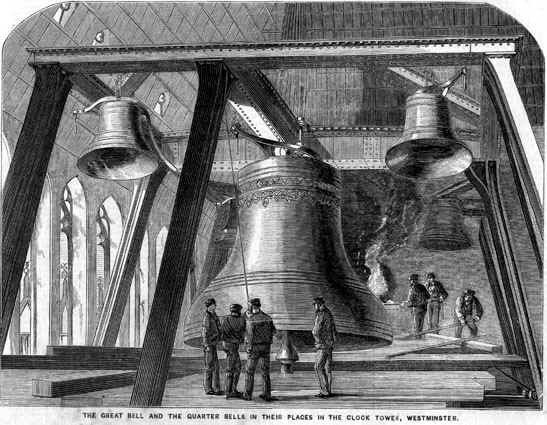|
|
||
|
||
|
Privacy Policy | Editorial Policy | Profit Policy | Join the Association | List of Members | Contact us | Index | Links |
||
|
Back Go to page: 1 2 3 4 5 6 7 8 9 10 11 12 13 14 15 16 17 18 19 20 Forward
|
||
|
Allan Georgeís Gems.
|
||
|
|
||
|
Drone technology.
Drone technology is advancing at an enormous rate. The boffins in the US have found a use for their obsolete F-16ís, theyíve wired them up and now fly them remotely. Itís not a good day for the future of manned aircraft, it seems like the pilot is on the endangered list. The short video below is really something.
A first for a full-size jet aircraft. Thousands of planes that were graveyard bound, with costs in the hundreds of millions, can now be used as never before. These F-16ís have been in the bone yard at Davis-Monahan for 15 years and are now being used as drones. See HERE.
Electronic Warfare.
What makes electronic warfare particularly difficult to combat is the ability of malicious foes to operate from anywhere in the world. And, as the United States moves toward a future Army where deploying autonomous vehicle systems is a likely scenario and where Soldiers' lives depend on these systems, resiliency to enemy assaults such as communications jamming and GPS spoofing becomes one of the Army's highest priorities.
Recently, robotics engineers from the U.S travelled to the Woomera Test Range in South Australia to continue work begun in 2015 on a multi-year program to evaluate the resiliency of autonomously operating a vehicle from across the globe, in this case, by TARDEC engineers in Michigan.
Called TORVICE, or Trusted Operation of a Robotic Vehicle in a Contested Environment, this joint program with the Australian Defence Science and Technology Group (DST-G) aims first to establish a baseline for long-distance control of a robotic vehicle before subjecting it to DST-G's follow-on trials.
At Woomera, TARDEC engineers tested their robotic vehicle, a modified Jeep Wrangler Rubicon, running TARDEC's Robotic Technology Kernel, an autonomous mobility system. This was coupled with an Australian-developed Satellite-On-The-Move (SOTM) system to transfer data between a control station and the moving robotic vehicle. Besides the TARDEC and SOTM teams, three DST-G groups collected passive electronic warfare data to prepare for the follow-on trials. This included capturing real-time high-resolution ground imagery via reconnaissance aircraft, operating an unmanned aerial vehicle to maintain constant location of the robotic vehicle and managing a battle management suite which draws information from the manned and unmanned aircraft.
Woomera, a remote area with minimal signal interferences and many long stretches of unpaved secondary roads, provides a perfect playground for experimenting with robotic mobility as well as cyber and electronic warfare techniques. Although the data from the experiment is still under review, TARDEC confirms success with the autonomous vehicle's pathfinding algorithms and its ability to get up to operationally relevant speeds with minimal operator takeover.
TARDEC has found, from past test events and simulation studies, that compared to a human driver in the vehicle even modest amounts of latency, (delay time required to get the signal from the operator to the vehicle) 100-300 milliseconds, significantly reduces the effectiveness compared to direct operation where the operator is directly controlling the throttle and steering. In their earlier trials, the latency from Australia to the vehicle halfway around the world was around one second.
Also, as expected, they found that autonomous vehicles with sensing equipment like LIDAR (light detection and ranging) are accurate at detecting positive obstacles, things above the ground such as rocks and trees, but negative obstacles, such as potholes or ditches, are very difficult to sense from a distance sufficient to stop the vehicle. Robotics engineers in the automotive industry haven't addressed this because they assume the road surface won't have any critical negative obstacles. The military don't have this luxury, in order to effectively operate in relevant environments, they need to make improvements in negative obstacle detection and avoidance.
There's still much training and learning required to get the robotic vehicle to perform effectively in a contested environment. As they start embedding robotic vehicles into formations with squads, it is paramount for there to be a level of trust established between the Soldier and the semi-autonomous vehicle. Resilience to electronic warfare is a critical component in achieving that trust, to the extent that not only under the best conditions will the robotic vehicle perform as expected, but especially upon contact with the enemy it will continue to do so.
They expect that resilience will come in the form of both hardware solutions, for example, anti-jamming and GPS antennas and intelligent behaviours where the robot can sense problems and adjust its mission accordingly.
Ultimately operating a robotic vehicle in a contested environment must allow for a broad spectrum of adversarial challenges including intrusion detection, for such rudimentary encounters as GPS spoofing, which the Iranians claim to have used to bring down a U.S. drone in 2011. If it is as easy as GPS spoofing for an adversary to interdict basic logistics, getting water, fuel and ammo to Soldiers, it's going to be a non-starter for autonomous systems deployment.
Once you remove a human from the loop of a vehicle, which in some cases soldiers' lives depend on, resiliency in all forms, environment, electronic and cyber warfare, becomes of the upmost importance.
Why is the earth rotating??
Why is the earth rotating? Did it always have the same rotation period? Will it always have the same rotation period?
Earth's graceful 24-hour rotation rate is one of the traits that makes
our planet so friendly to life, allowing most parts of Earth to stay a
nice, comfortable temperature as they are bathed in sunlight during the
day and darkness at night. Each planet in the solar system has its own
unique rotation rate. Tiny Mercury, sizzling closest to the Sun, takes
59 Earth days to turn around just once. Venus, the second planet,
rotates once every 243 Earth days. What's more, Venus
So, why does the Earth and the other planets rotate at all? It will help to understand why when we know how our solar system was formed. Almost five billion years ago, our solar system had its beginnings as a vast cloud of dust and gas. The cloud began to collapse, flattening into a giant disk that rotated faster and faster, just as an ice skater spins faster as she brings her arms in. The Sun formed at the centre and the swirling gas and dust in the rest of the spinning disk clumped together to produce the planets, moons, asteroids, and comets. The reason so many objects orbit the Sun in nearly the same plane (called the ecliptic) and in the same direction is that they all formed from this same disk.
While the planets were forming, there was not much peace in our solar
system. Clumps of matter of all sizes often collided and either stuck
together or side-swiped each other, knocking off pieces and sending each
other spinning.
The Moon formed much closer to Earth than it is today. As Earth rotates, the Moon's gravity causes the oceans to rise and fall. (The Sun also does this, but not as much.) There is a little bit of friction between the tides and the turning Earth, causing the rotation to slow down just a little. As Earth slows, it lets the Moon creep away Ė itís still doing that today.
We can use extremely accurate atomic clocks to measure exactly how much
the rotation is slowing down. One hundred years from now, a day will be
about 2 milliseconds longer than today. Two milliseconds is 1/500th of a
We know the Earth is rotating, but why is it spinning? Why is everything in the Solar System spinning? And why is it mostly all spinning in the same direction? It canít be a coincidence. Look down on the Earth from above, and youíd see that itís turning in a counter-clockwise direction. Same with the Sun, Mars and most of the planets.
4.54 billion years ago, our Solar System formed within a cloud of hydrogen. Then it took some kick, like from the shockwave from a nearby supernova and this set a region of the cold gas falling inward through its mutual gravity. As it collapsed, the cloud began to spin.
But why?
Itís the conservation of angular momentum. Think about the individual atoms in the cloud of hydrogen. Each particle has its own momentum as it drifts through the void. As these atoms grab onto one another, they need to average out their momentum. It might be possible to average out perfectly to zero, but itís really really unlikely. Which means, there will be some momentum left over. Like a figure skater pulling in her arms to spin more rapidly, the collapsing proto-Solar System with its averaged out particle momentum began to spin faster and faster.
This is the conservation of angular momentum at work.
As the Solar System spun more rapidly, it flattened out into a disk with a bulge in the middle. We see this same structure throughout the Universe: the shape of galaxies, around rapidly spinning black holes and we even see it in pizza restaurants.
The Sun formed from the bulge at the centre of this disk, and the planets formed further out. They inherited their rotation from the overall movement of the Solar System itself. Over the course of a few hundred million years, all of the material in the Solar System gathered together into planets, asteroids, moons and comets. Then the powerful radiation and solar winds from the young Sun cleared out everything that was left over. Without any unbalanced forces acting on them, the inertia of the Sun and the planets have kept them spinning for billions of years.
And theyíll continue to do so until they collide with some object, billions or even trillions of years in the future.
Have a look at THIS.
Even though the earth is rotating, the ground feels firm and solid beneath your feet, thatís because gravity keeps you firmly attached to the planet and because of momentum, you donít feel the movement Ė the same way you donít feel the speed of a car going down the highway.
But how fast does the Earth rotate?
You might be surprised to know that a spot on the surface of the Earth at the equator is moving at 1675 km/h or 465 meters/second. Just think, for every second, youíre moving almost half a kilometre through space and you donít even feel it.
Want to do the calculation for yourself? The Earthís circumference at the equator is 40,075 km. And the length of time the Earth takes to complete one full turn on its axis is 23 hours, 55 minutes 48 seconds. Then we divide the length of a day into the distance a point on the equator travels in that period: 40,075 km/23.93 hours = 1,675 km/hour, 465 meters/second.
But hang on, 23 hours, 55 minutes 48 seconds? Isnít a day 24 hours? Astronomers calculate a day in two ways. Thereís the amount of time it takes for the Earth to complete one full rotation on its axis, compared to the background stars. Imagine you were looking down at the Earth from above the North Pole. Youíd see the Earth turn once completely in 23 hours, 55 minutes 48 seconds. Astronomers call this a sidereal day.
And then thereís the time it takes for the Sun to return to the same spot in the sky. Since the Earth is orbiting the Sun, we actually need an extra 4 minutes, 12 seconds each day to return the Sun to the same spot. Astronomers call this a solar day.
The speed of the Earthís rotation changes as you go North or South away from the equator. Finally, when you reach one of the Earthís poles, youíre taking a whole day to just turn once in place Ė thatís not very fast.
Because youíre spinning around and around on the Earth, thereís a force (called centrifugal) that wants to spin you off into space; like when you spin a weight on a string. But donít worry, that force isnít very strong and itís totally overwhelmed by the force of gravity holding you down. The force that wants to throw you into space is only 0.3% the force of gravity. In other words, if the Earth wasnít spinning, you would weigh 0.3% more than you do right now.
Space agencies take advantage of the higher velocities at the Earthís equator to launch their rockets into space. By launching their rockets from the equator, they can use less fuel, or launch more payload with the same amount of fuel. As it launches, the rocket is already going 1,675 km/hour. That makes it easier to reach the 28,000 km/hour orbital velocity; or even faster to reach geosynchronous orbit.
What would happen if the earth stopped turning Ė see HERE.
|
||
|
|
||
|
|
||
|
The Australian War Memorial.
The Australian War Memorial, that wonderful edifice in Canberra that attracts hundreds of thousands of visitors each year, recently celebrated it's 75th anniversary. To celebrate they have produced a video which you can now see below. |
||
|
|
||
|
Chinese Space Plane.
Chinese scientists are looking to get into the space tourism industry
with their own design for a reusable, rocket-equipped space vehicle. It
was reported that the China Academy of Launch Vehicle Technology
announced its ambitious concept at the recent International
Astronautical Congress in Mexico. The China Academy teamís concept is
similar to the spaceplanes under development by private enterprises such
as Virgin Galactic and Blue Origin. The design features a winged vehicle
with its own rocket, allowing it to launch from a pad and land back on
the ground. The flights would cost between $200,000 and $250,000 per
passenger.
The announcement didnít provide much detail on the spaceplaneís construction, components or the rockets design, but New Scientist quoted a China Academy official at the congress saying that the spacecraftís development is already well underway, and ďalmost all of the ground tests have been finished and all the subsystems of the test vehicle worked very well.Ē Test flights are slated to take place over the next two years. Also, there are two sizes in the works Ė a 10-ton spaceplane that can carry five people, and a 100-ton version for up to 20 people with an external rocket that would provide the power to reach low orbit for delivering satellites. This larger version and the test-flight schedule drew some scepticism from an expert at the Smithsonian Institutionís National Air and Space Museum, who told the magazine that ďthe most unusual part is the belief that they can send up to 20 people to 100 kilometres and more on a rocket without a mother ship and no staging, reusing it some 50 times.Ē
Who wants to be first???
|
||
|
|
||
|
Vietnam Veterans Commemorative Walk.
The Vietnam Veterans Commemorative Walk is located in the town of Seymour, Victoria. Seymour is a town of approximately 6000 people, about an hourís drive north of Melbourne. It has been the centre for the pastoral industry north of the Great Dividing Range since its founding in 1839. The town also has a proud military history dating back to the Boer War when troops were trained in the surrounding hills prior to embarkation.
|
||
|
|
||
|
Puckapunyal, the Armyís training base is only 10 km west of Seymour, which makes it an ideal place to house the Commemorative Walk.
The Commemorative Walk is not to memorialise those who served in Vietnam and/or those who paid the ultimate price, but to commemorate the service of all who played their part in what turned out to be a tumultuous part of Australiaís history. It does, in the interpretive centre, give an accurate history of the times prior to military commitment, the period of our involvement and the aftermath.
The Walk is a meandering red earth path set in native trees and grasses that resemble rubber trees and rice paddies. These two plants are synonymous with Vietnam. The centre piece of this Walk is the wall, made up of panels of DigiGlass with the name of every Serviceman and Woman who served, in their various capacities in that conflict.
The names are separated only by the Service in which they served and are in alphabetical order. The plinths on which the panels stand have holes for you to place Poppies; the effect is to have a field of Poppies under the names. Behind the names is the picture story of the Vietnam conflict.
|
||
|
|
||
|
Aerial View of the Walk.
|
||
|
This project was a collaboration between the Mitchell Sub Branch of Vietnam Veterans and the Mitchell Shire Council and was first conceived in 2005 with an approach to Seymour RSL from Mitchell Shire Mayor Bill Melbourne. It was then handed to the Mitchell sub branch of the VVA which elected a steering committee to investigate the viability of the project.
The Mitchell Sub Branch then formed a subcommittee of 8 members and charged them with working with the Shire Council, to firstly form a concept, then implement that concept . They started the project with things they did not want:
∑ Another Memorial ∑ Statues ∑ Wall plaques ∑ Something that would fade into history
The idea was not to denigrate the fine Memorials, statues etc of other areas at all, it was just that they had all been done, and done well. They needed something unique to Vietnam.
What symbolises Vietnam? Rubber trees, Rice paddies and Hueys. It is a bit hard to recreate the humidity and the rain that you can set your watch by, but the others they could do.
The Shire Council provided the land, approximately 350 metres long and
35 metres wide and the Walk is what
Stage 1 was officially opened on 30th March 2011. A full-size replica of the Luscombe Bowl entertainment stage in Nui Dat was built and within it are interpretive panels on the walls about the Vietnam conflict including Long Tan, Coral, Balmoral and other major battles with the enemy. There is also a history on the building of the original Luscombe Bowl.
You can see further information on the Walk HERE.
NSW Travel Pass.
There is a new travel pass for eligible NSW resident ex-members of the defence forces. Eligible ex-members of the defence forces with service-related disabilities are receiving a new travel pass (ticket) from Transport for NSW. The Transport Concession Entitlement Card is replacing the Ex-Member of Defence Forces Pass (paper ticket) that expired on the 31st October 2016.
The Transport Concession Entitlement Card is a valid travel pass (or ticket) for NSW ex-members of the defence forces with service-related disabilities.
Similar to the previous ticket, the Transport Concession Entitlement Card will be used as a proof of entitlement to free travel. Cardholders will need to show it to staff at train stations or wharves who will manually open wide access gates. Cardholders will also need to show it to bus drivers, light rail and private ferry staff. Revenue protection officers or NSW police officers may also ask to see it.
Travel entitlements and eligibility rules have not changed.
New applicants have been receiving the cards since early September 2016. From mid-October 2016, Transport Concession Entitlement Cards will be mailed-out to around 15,000 existing Ex-Member of Defence Forces Pass holders. The free travel Opal card is optional for NSW ex-members of the defence forces with service-related disabilities. Tapping on and off is also optional. Customers who use the free travel Opal card can open gates at train stations and wharves themselves. Itís not too late to order a free travel Opal card. Details will be provided when the Transport Concession Entitlement Card is mailed out to existing customers. New applicants can download the application form at transportnsw.info/ex-defence.
There is more information HERE.
Interesting Facts about Big Ben.
Much attention is given to the chimes of Big Ben, but how much do we know about the famous Westminster clock which was commissioned during the rebuilding of the Palace of Westminster in the wake of an 1834 fire.
|
||
|
|
||
|
See HERE.
|
||
|
|
||
|
|
||
|
|
||
|
Velly Intelesting Ė but stupid!!!!
|
||
|
|
||
|
|
||
|
Back Go to page: 1 2 3 4 5 6 7 8 9 10 11 12 13 14 15 16 17 18 19 20 Forward |
||
|
|

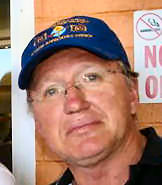

 rotates backwards from the direction of its orbit around the Sun, as do
Uranus and tiny dwarf planet Pluto. Uranus even lies down on the job,
rolling around with its axis of rotation pointed nearly toward the Sun.
rotates backwards from the direction of its orbit around the Sun, as do
Uranus and tiny dwarf planet Pluto. Uranus even lies down on the job,
rolling around with its axis of rotation pointed nearly toward the Sun.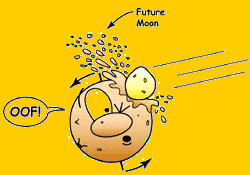 Sometimes
the gravity of big objects would capture smaller ones in orbit. This
could be one way the planets acquired their moons. Scientists think that
a large object, perhaps the size of Mars, impacted our young planet,
knocking out a chunk of material that eventually became our Moon. This
collision set Earth spinning at a faster rate. Scientists estimate that
a day in the life of early Earth was only about 6 hours long.
Sometimes
the gravity of big objects would capture smaller ones in orbit. This
could be one way the planets acquired their moons. Scientists think that
a large object, perhaps the size of Mars, impacted our young planet,
knocking out a chunk of material that eventually became our Moon. This
collision set Earth spinning at a faster rate. Scientists estimate that
a day in the life of early Earth was only about 6 hours long. 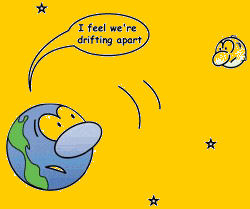 second,
or how long it takes a car going 85 kph to travel only 5 cms -- in other
words, much less than the blink of an eye. So, if you live to be 100,
you can't complain that the days are getting shorter! At this rate,
though, you don't have to worry about the days getting longer to change
things very much.
second,
or how long it takes a car going 85 kph to travel only 5 cms -- in other
words, much less than the blink of an eye. So, if you live to be 100,
you can't complain that the days are getting shorter! At this rate,
though, you don't have to worry about the days getting longer to change
things very much.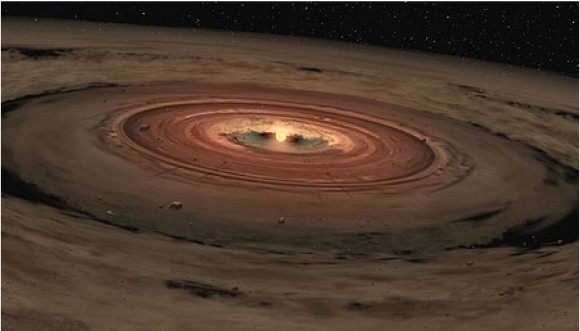
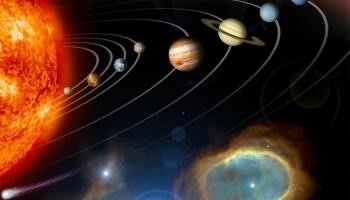



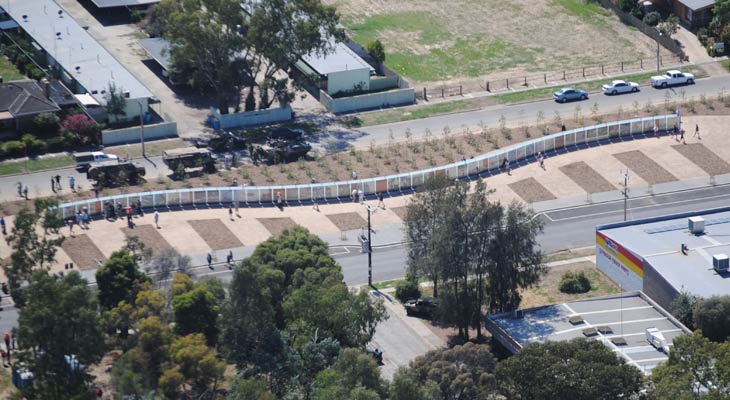
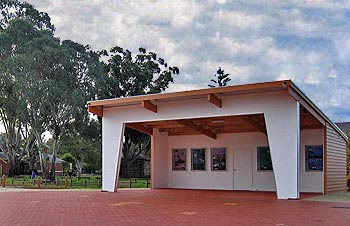 resulted.
resulted.